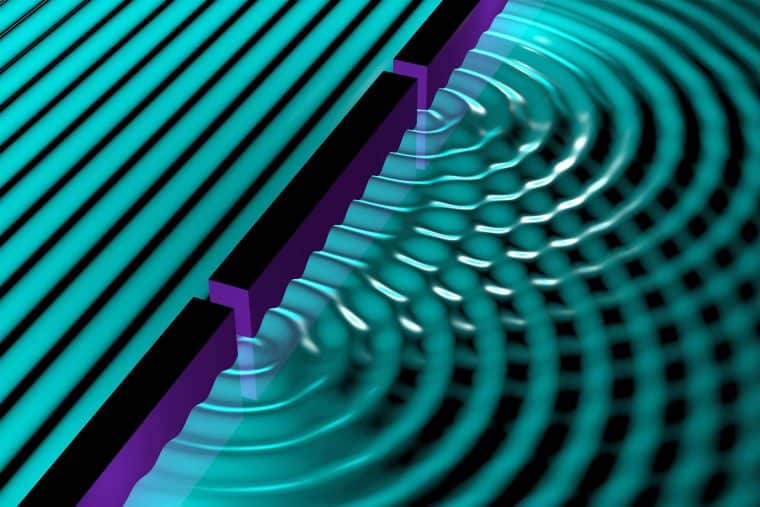
Quantum mechanics research has now broken a monumental barrier. Quantum effects were recently observed in a molecule so large that it can be seen without a microscope.
One of the greatest unsolved mysteries of science today is how physics on a microscopic scale marries physics on a macroscopic scale.
Einstein’s deterministic Theory of General Relativity has been proven correct with a remarkable degree of accuracy on large scales. It perfectly explains how planets orbit and how galaxies collide but it doesn’t explain everything.
The theory of quantum mechanics, on the other hand, is accurate on the scale of molecules and atoms. For example, it can predict exactly how a radioactive atom will decay and it describes why light seems to take the form of both a particle and a wave.
With these 2 theories that explain the physics of both tiny and massive objects incredibly well, it may seem like physicists have it all figured out. However, the problem is that the 2 theories just don’t make sense together. They are entirely incompatible.
Since the accuracy of quantum physics was realized, scientists around the globe have been searching for a way to unify the 2 theories. One popular avenue of this research involves trying to find the exact boundary at which the theories meet.
Physicists have been scaling up experiments looking to demonstrate quantum mechanics on larger and larger scales for many years. They often look for quantum superposition, a fundamental principle of quantum mechanics.
What is Quantum Superposition?
Superposition is best illustrated by the classic Schrodinger’s Cat thought experiment, created by the founder of quantum physics, Erwin Schrodinger. In this hypothetical scenario, a cat is put in a box with a small amount of radioactive material and a Geiger counter that detects when the material decays, which would then release a poison that kills the cat.
In this scenario, the cat is in a paradoxical superposition of 2 states, dead and alive, until the box is opened and the result is observed. This, in essence, describes the concept of quantum superposition..
The paradoxical thought experiment was initially used by Schrodinger as an example to show how absurd elements of quantum physics are. Quantum superposition has since been mathematically proven on molecular scales.
A New Era of Macroscopic Quantum Superposition
Until recently, the largest molecule that had been shown to display quantum superposition was 2,000 atoms using a method called matter interferometry. This was a great accomplishment but was not the last in this field.
A recent paper by Björn Schrinski, Yu Yang et al. demonstrated quantum superposition in a molecule so large that it could be viewed with the naked eye. The lab demonstrated quantum superposition in a sapphire crystal molecule of 10^16 atoms using an apparatus called an acoustic resonator.
These experiments may help scientists find the boundary between quantum mechanics and general relativity. They may eventually contribute to the bridging of the two theories or the development of a new, unified theory of physics.
Similar Articles:
- Dropbox Lays off 16% Employees Amid AI Pivot: Is Sam Altman’s Prophesy Coming True?
- 12 Best Crypto Presales to Invest in 2023 – Compare Pre-ICO Projects
- Netflix is Looking for Another Squid Game With $2.5 Billion Investment in Korea
What's the Best Crypto to Buy Now?
- B2C Listed the Top Rated Cryptocurrencies for 2023
- Get Early Access to Presales & Private Sales
- KYC Verified & Audited, Public Teams
- Most Voted for Tokens on CoinSniper
- Upcoming Listings on Exchanges, NFT Drops